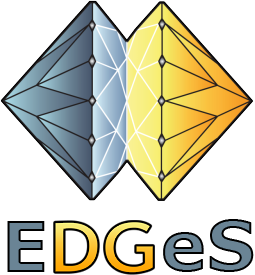
Project data
Department in charge
The targets of the project are user communities that require large computing power not available or accessible in current scientific e-Infrastructures. In order to support the specific needs of these scientific and other communities The consortium will interconnect the largest European Service Grid infrastructure (EGEE) with existing Desktop Grid (DG) systems in a strong partnership with the EGEE consortium. Service Grids (SG) are more flexible and can accommodate a broader variety of applications than Desktop Grids, however, their setup and maintenance require more efforts, highly skilled IT specialist, and dedicated resources. On the other hand, Desktop Grids are currently restricted solely to a subclass of compute-intensive applications but these easy-to-scale systems are able to collect 1-2 orders of magnitude more compute power by utilizing the involved spare and volunteer IT resources at a fraction of the cost. Making a bridge between these two types of Grid systems will enable the users to transparently execute applications on any arbitrary platform involved in the new infrastructure. Taking the advantages of both approaches the EDGeS infrastructure will represent a major step towards a European wide scientific grid where extremely large number of resources could be integrated to support grand-challenge scientific and other applications. The involvement of low-cost volunteer Desktop Grids into the European scientific grid infrastructure will contribute to the establishment of a sustainable European Grid infrastructure. The consortium is to extend the potential user communities for both beyond traditional scientists and current volunteer computing participants to further involve citizens, school students, and company employees, giving them an opportunity to become involved in science and to apply Grid technology in their every day life. In order to meet these objectives the project will connect Desktop Grid based city Grids, school grids and enterprise grids with EGEE.
Participants
Coordinator: MAGYAR TUDOMÁNYOS AKADÉMIA SZÁMÍTÁSTECHNIKAI ÉS AUTOMATIZÁLÁSI KUTATÓ INTÉZET (MTA SZTAKI), Hungary
CENTRO DE INVESTIGACIONES ENERGETICAS, MEDIOAMBIENTALES Y TECNOLOGICAS (CIEMAT), Spain
FUNDACION PARA EL DESARROLLO DE LA CIENCIA Y LA TECNOLOGIA EN EXTREMADURA (Fundecyt), Spain
INSTITUT NATIONAL DE RECHERCHE EN INFORMATIQUE ET EN AUTOMATIQUE (INRIA), France
THE UNIVERSITY OF WESTMINSTER (UoW), United Kingdom
CARDIFF UNIVERSITY (CU), United Kingdom
FACULDADE CIENCIAS E TECNOLOGIA DA UNIVERSIDADE DE COIMBRA (FCTUC), Portugal
STICHTING ALMEREGRID (AlmereGrid), The Netherlands
CENTRE NATIONAL DE LA RECHERCHE SCIENTIFIQUE (CNRS/IN2P3), France
Manager

Péter Imre Kacsuk
Members



